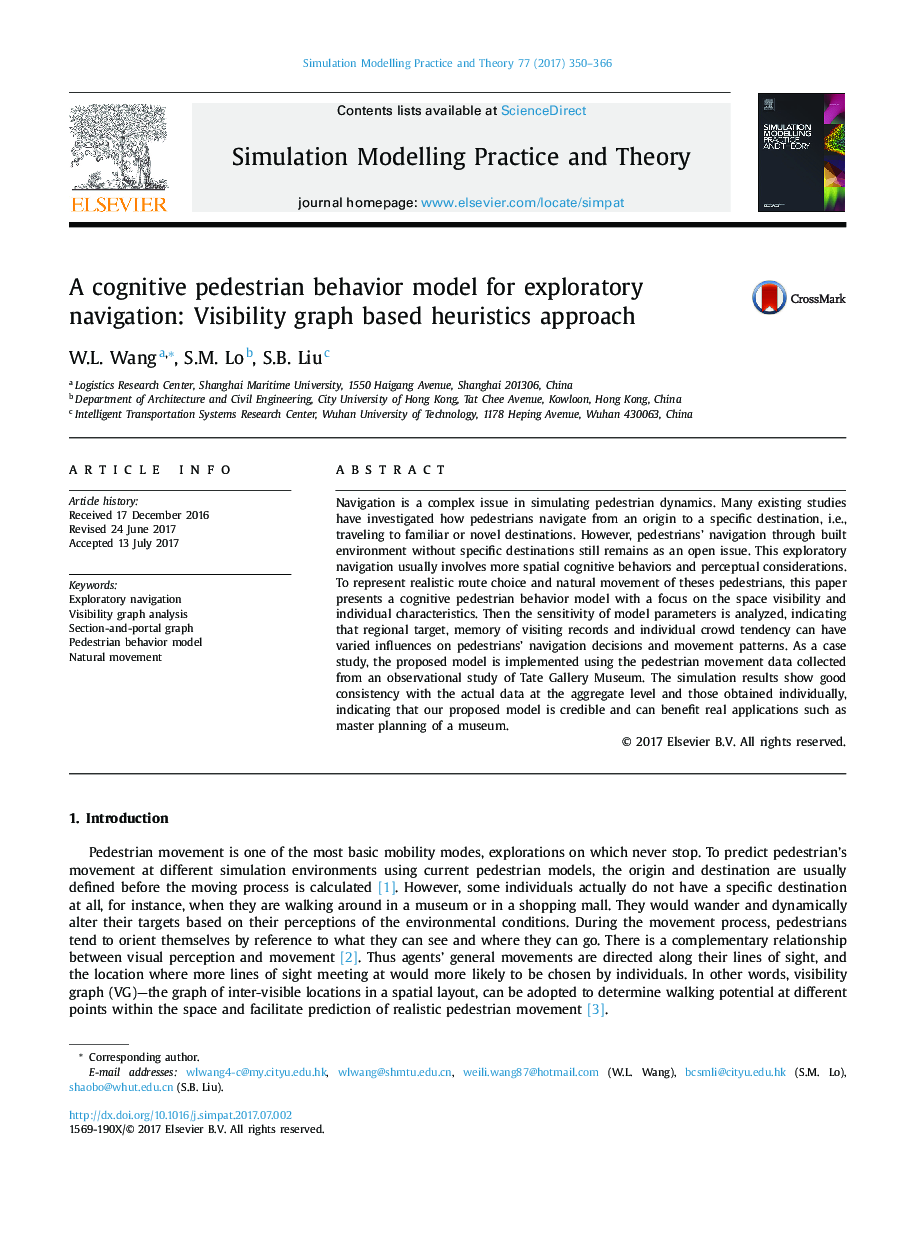| Article ID | Journal | Published Year | Pages | File Type |
|---|---|---|---|---|
| 4962657 | Simulation Modelling Practice and Theory | 2017 | 17 Pages |
Abstract
Navigation is a complex issue in simulating pedestrian dynamics. Many existing studies have investigated how pedestrians navigate from an origin to a specific destination, i.e., traveling to familiar or novel destinations. However, pedestrians' navigation through built environment without specific destinations still remains as an open issue. This exploratory navigation usually involves more spatial cognitive behaviors and perceptual considerations. To represent realistic route choice and natural movement of theses pedestrians, this paper presents a cognitive pedestrian behavior model with a focus on the space visibility and individual characteristics. Then the sensitivity of model parameters is analyzed, indicating that regional target, memory of visiting records and individual crowd tendency can have varied influences on pedestrians' navigation decisions and movement patterns. As a case study, the proposed model is implemented using the pedestrian movement data collected from an observational study of Tate Gallery Museum. The simulation results show good consistency with the actual data at the aggregate level and those obtained individually, indicating that our proposed model is credible and can benefit real applications such as master planning of a museum.
Related Topics
Physical Sciences and Engineering
Computer Science
Computer Science (General)
Authors
Wang W.L., Lo S.M., Liu S.B.,
